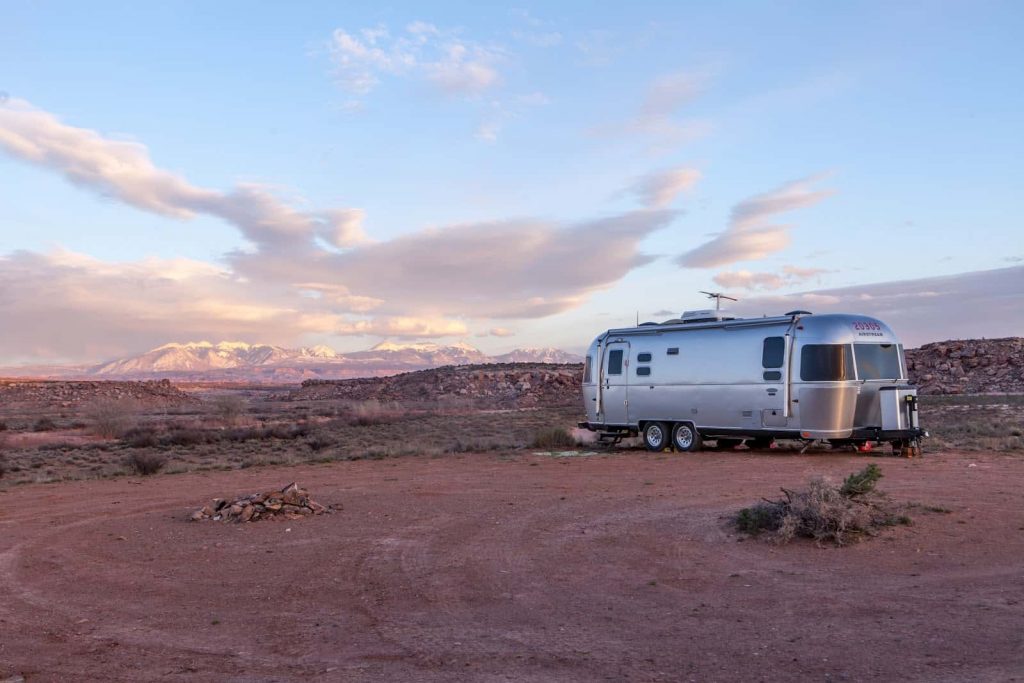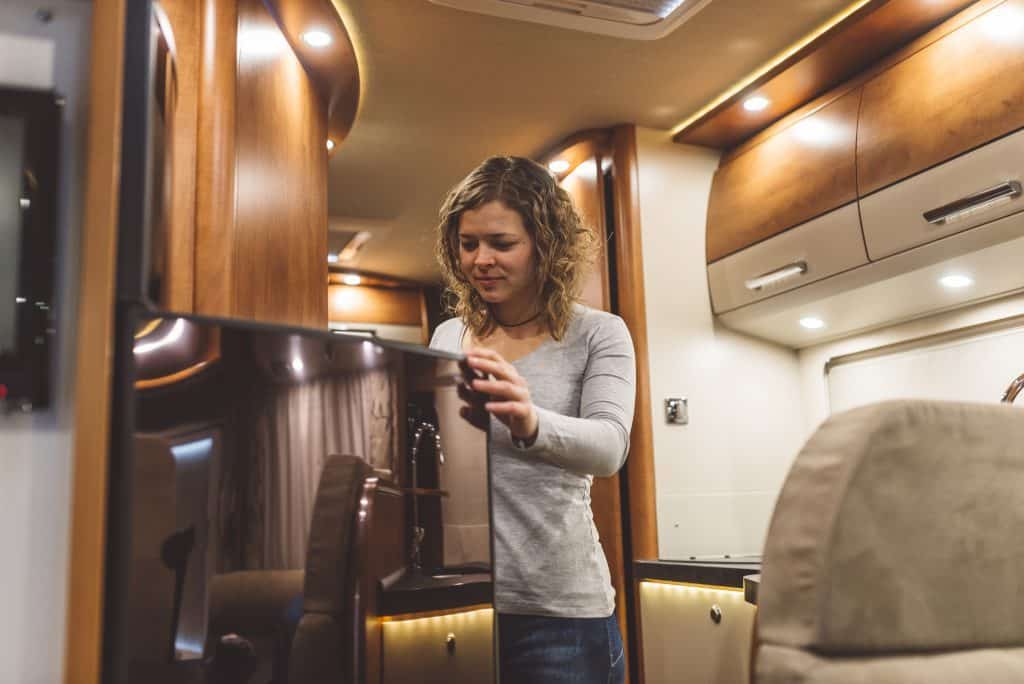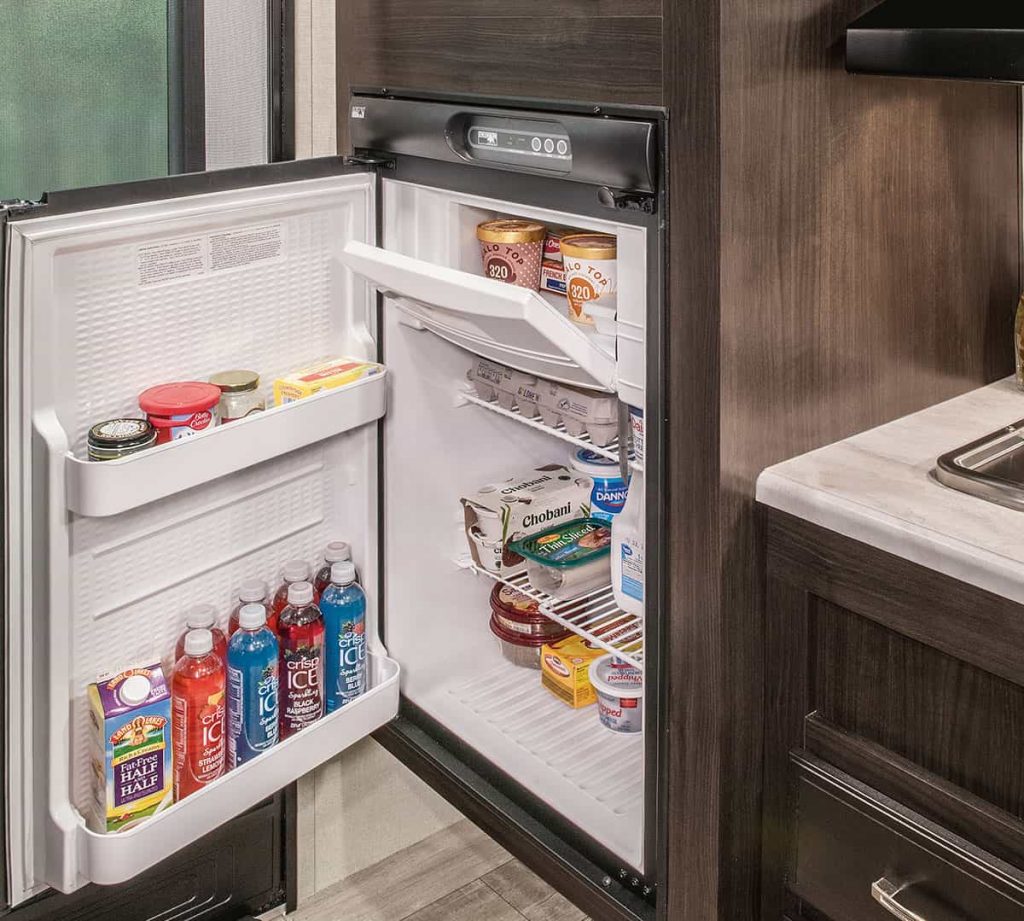Have you recently purchased an RV and want to get a refrigerator? Or, do you want to replace the current refrigerator in your motorhome with one that is compatible with your needs?
The dilemma of picking up the right one — we all know how confusing and painful this is; but if you know how does an RV refrigerator work, it becomes easier to select the right refrigerator according to your needs.
Some RV units come with a built-in refrigerator. In that case too, knowing about the working method helps with proper maintenance and taking necessary repair actions.
Let’s take a look at its differences from a regular household unit before moving onto its working mechanism.
Contents
Basic Differences between RV and Household Refrigerators
The source of energy is the primary point of difference between these two types. A traditional household refrigerator derives power from electricity, while an RV refrigerator can run on propane or electrical power.
Home refrigerators use an electric pump since electrical connections are readily available in homes. The scenario is different in the case of an RV refrigerator. Think about drydocking or camping in a remote place where there will be no electricity source to draw power.

An RV refrigerator, also known as an absorption refrigerator, does not use RV battery to get the energy it needs. A propane burner works as an alternate power source in those cases. However, RV refrigerators run on electricity too so you can plug it into a power outlet whenever an electricity source is available.
Another difference lies in the internal mechanism. Traditional refrigerators function with the help of a compressor, but RV refrigerators do not. They don’t have any compressor or other moving parts, making them last for a long time.
The durability also depends on the materials these units are made of. RV refrigerators are made of stainless steel so they can withstand the jerks, vibrations, and changing temperatures — all of which are direct consequences of RVing.
A conventional refrigerator will not survive long in an RV environment because it will not withstand all the shaking and jerking during a journey. Neither the construction materials and nor the internal mechanisms of a home refrigerator are robust enough to endure the beating of an RV journey, leading to go kaput at the end.
An RV refrigerator is pricier than a traditional household unit, but it lasts longer and survives in hostile environments, which makes up for the extra costs.
How Does an RV Refrigerator Work?
The working mechanisms are slightly different for propane- and electricity-run models. Let’s discuss both types so you can easily make a decision.
A 3-Step Process for Propane-Run Units
Models that run on propane gas work in three steps, which are as follows:

Step One: Boiling Ammonia
How does a camper refrigerator work when it operates on propane? Such refrigerators come with a generator or boiler, inside which dissolved ammonia gas is pre-stored. The operational process of an RV refrigerator initiates here.
A burner lights up and starts heating the boiler until the ammonia gas reaches its boiling point, which is lower than the water. As a result, the gas floats into the condenser through the pump tube.
After reaching the condenser, the gas dissipates the heat. Then, it starts to cool off and transforms into a liquid form, despite not having any trace of water in it.
Step Two: Cooling Process of Ammonia
The liquid ammonia starts flowing to reach the evaporator from the condenser. Here, the evaporator works as a freezing chamber that contains hydrogen gas.
The pressure in the evaporator is quite low, which forces ammonia to expand in volume. In this process, it also cools the gas at a high-speed. The evaporator is the place where the cold air is generated.
Now, a built-in fan blows the cold air when the air moves past it, helping to circulate the air thoroughly inside the refrigerator.
Step Three: Returning to Boiler
A component named absorber comes integrated with all RV refrigerators. Its function is to send water seeping inside the freezing chamber, where both ammonia and hydrogen gases are present. Remember that hydrogen does not dissolve in water, but ammonia does.
Now, the water with dissolved ammonia trickles down a tube and reaches to its originating place – the generator.
When the ammonia goes back to the generator or boiler, the entire cycle starts again and keeps repeating through the lifetime of the RV refrigerator.
What is the Standard Consumption Rate of Propane Refrigerators?
Having a clear idea about how much propane gas is consumed by an RV refrigerator is helpful for planning the expenses and procuring the required amount of the gas.
Keep in mind that the consumption rate may vary, depending on factors like temperature and the duration of the operation. However, to keep your food fresh for a long time, a propane refrigerator may consume around 1.5 lbs of propane gas per day.

Mechanism of an Electrical RV Refrigerator
How does an RV refrigerator work when it draws power from a power outlet? There are some latest models of refrigerators that use both propane and electricity as their power source.
RV users can run these refrigerators everywhere, with or without a stable electricity supply. Some models even automatically switch between propane gas and electricity mode, offering more convenience to the RV owners.
Electricity-run refrigerators come with a built-in heating element that generates the required heat so that the refrigerator can continue to function.
Plenty of electrical models at various price ranges are available in the market. DC system is a feasible option to run these refrigerators when the RV is moving.
Conclusion
That’s it. Now you know how does an RV refrigerator work. For boondockers, a propane-run unit makes sense, but a refrigerator that runs on both propane and electricity is a safer option since you can use it everywhere.
By knowing the working methods of different RV refrigerators, you can easily decide which one to choose for your RV. It also gives a general idea of which components to check when the appliance starts to give troubles.

I have a 1977 Prowler camper. Frig has worked since 1977.. Then just one day quit cooling. Is there a fuse to check…??? Thanks